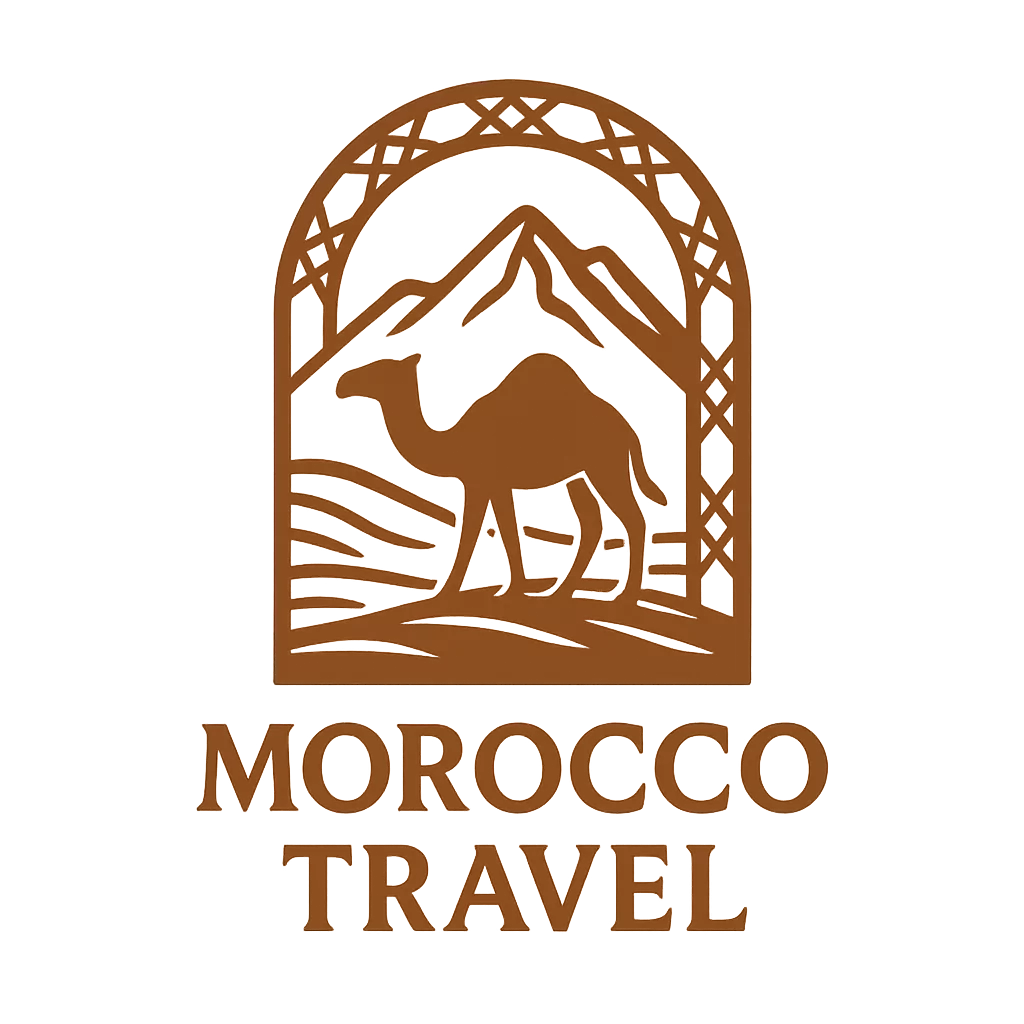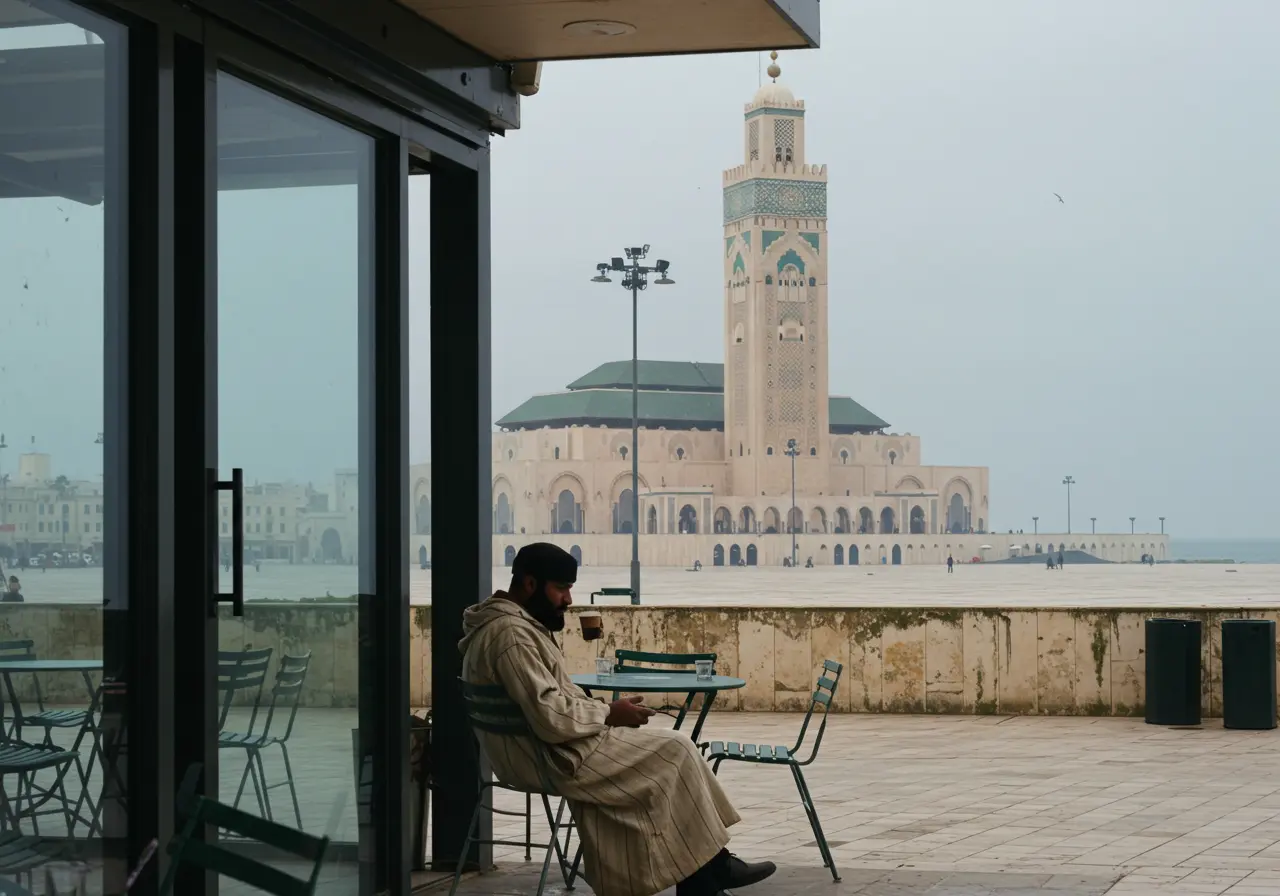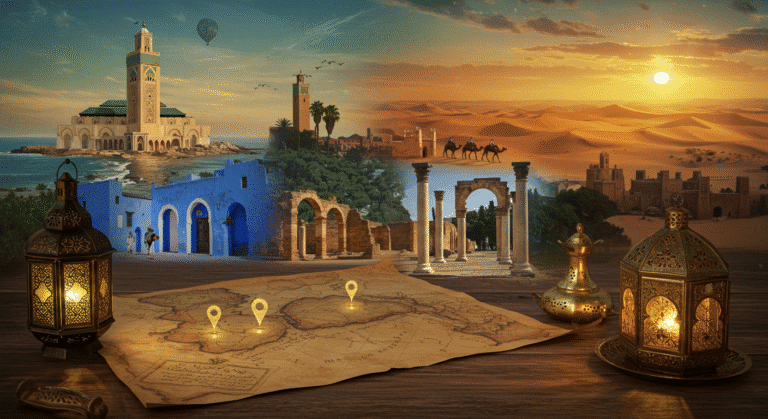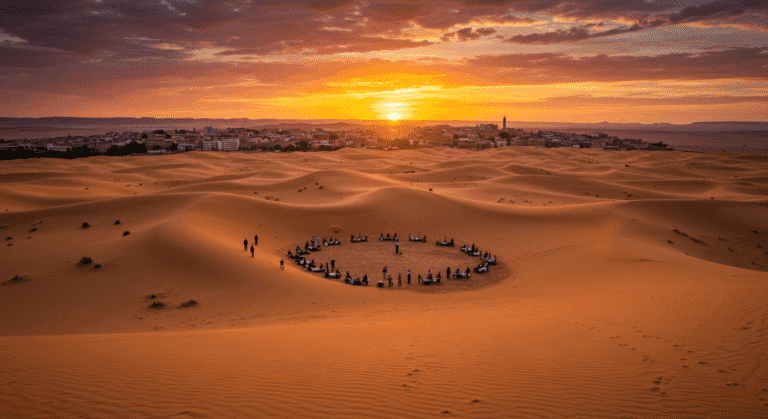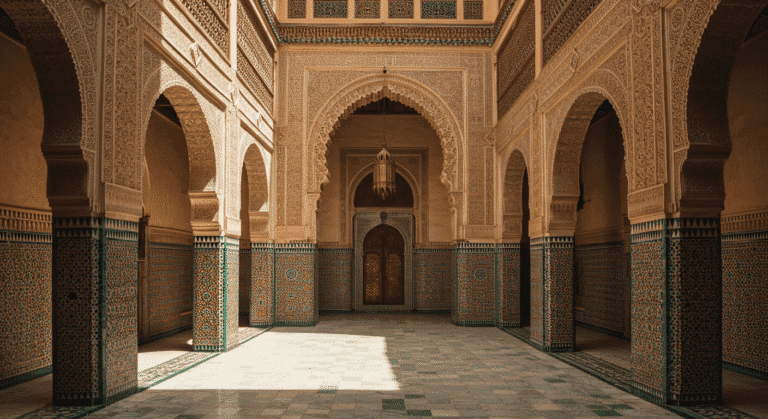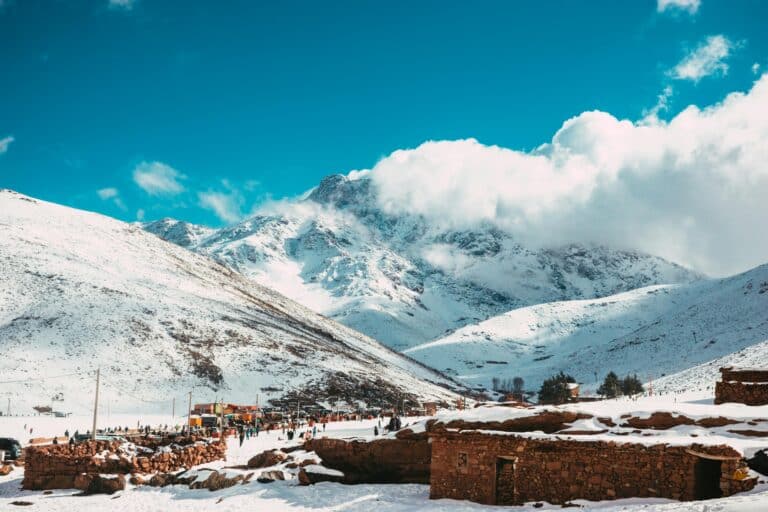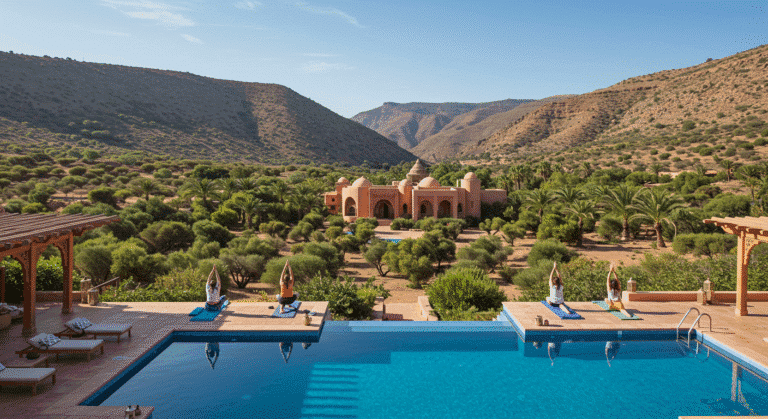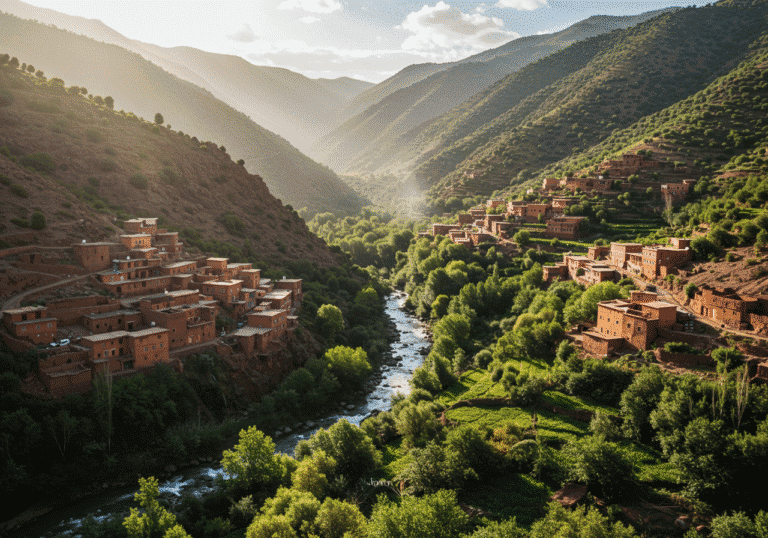Discover Casablanca Where Tradition Meets Trend
Is Casablanca Just a Movie, or Morocco’s Most Misunderstood Metropolis?
Did you know that Casablanca, Morocco‘s largest city, receives fewer than half the tourists that flock to Marrakech, despite being the country’s economic powerhouse? This coastal gem, where Art Deco elegance meets traditional Moroccan flair, represents an authentic slice of contemporary Moroccan life that many travelers miss entirely. While Humphrey Bogart never actually set foot in Casablanca (the movie was filmed in Hollywood), the real city offers a fascinating blend of French colonial architecture, bustling markets, and ultra-modern developments that make it Morocco’s most dynamic destination.
Casablanca defies expectations at every turn. It’s where tradition and innovation converge, creating a vibrant urban landscape unlike anywhere else in North Africa. Whether you’re exploring the magnificent Hassan II Mosque jutting dramatically into the Atlantic or sipping espresso in a trendy Racine Quarter café, Casablanca rewards those who look beyond the tourist trail with an intoxicating mix of old-world charm and cosmopolitan energy.
Travel Checklist: Packing for Casablanca’s Contrasts
Preparing for Casablanca means packing for a city of contrasts modern yet traditional, relaxed yet conservative. Here’s what to bring to navigate this fascinating Moroccan metropolis:
Essential Clothing:
- Lightweight, breathable fabrics for Casablanca’s warm climate
- At least one modest outfit for visiting the Hassan II Mosque (covering shoulders, knees, and for women, a scarf to cover hair)
- Smart-casual attire for upscale restaurants in Ain Diab or Anfa neighborhoods
- Comfortable walking shoes for exploring Casablanca’s sprawling urban landscape
- Light jacket or sweater for cool evening sea breezes, especially from October to April
Travel Documents:
- Valid passport with at least six months validity
- Printed hotel reservations (particularly useful for immigration)
- International driving permit if planning to rent a car
- Travel insurance details with emergency contacts
Tech Essentials:
- Type C/E electrical adapter for Morocco’s 220V outlets
- Portable power bank (Casablanca is incredibly photogenic)
- Offline maps app with downloaded Casablanca city map
- Currency converter app (Moroccan dirham isn’t widely traded outside the country)
Pro Tip: Unlike smaller Moroccan cities, Casablanca is spread out, making a good day bag essential. Consider bringing a cross-body bag with secure zippers for navigating busy markets and crowded trams while keeping valuables safe.
Best Time to Visit Casablanca
Timing your visit to Casablanca can significantly impact your experience in Morocco’s commercial capital:
Peak Season (July-August): Casablanca experiences its highest tourist numbers during summer, with hotel prices increasing by approximately 25%. While temperatures hover around 26-28°C (79-82°F), the coastal location means humidity can make it feel warmer. The popular Casablanca Festival of Arts typically occurs in July, bringing cultural performances throughout the city.
Shoulder Season (April-June, September-October): These months offer the perfect balance of pleasant weather and manageable crowds. October visitors enjoy 40% fewer tourists than July, with comfortable temperatures averaging 22°C (72°F). The L’Boulevard Festival in September showcases Casablanca’s vibrant music scene with performances from Morocco’s best contemporary artists.
Low Season (November-March): Winter brings mild temperatures (13-18°C/55-64°F) and occasional rainfall, particularly in December. Hotel rates drop by up to 30%, making luxury accommodations more accessible. February’s International Casablanca Book Fair attracts literary enthusiasts from across North Africa.
Data-Driven Insight: According to tourism statistics, Casablanca receives approximately 20% fewer international visitors during Ramadan, when some restaurants and cafés operate on limited hours during daylight. However, experiencing the festive iftar (breaking fast) atmosphere in the evenings offers a unique cultural immersion not available at other times.
Your Perfect 3-Day Casablanca Itinerary
Day 1: Iconic Casablanca & Coastal Charm
Morning: Hassan II Mosque & Old Medina Begin your Casablanca adventure at its most magnificent landmark, the Hassan II Mosque. Arrive by 9 AM to join the first guided tour (120 MAD/approximately $12) of the day through this architectural marvel one of the few mosques in Morocco open to non-Muslims. Built partially extending over the Atlantic Ocean, its 210-meter minaret is the world’s tallest, and the prayer hall can accommodate 25,000 worshippers beneath its retractable roof.

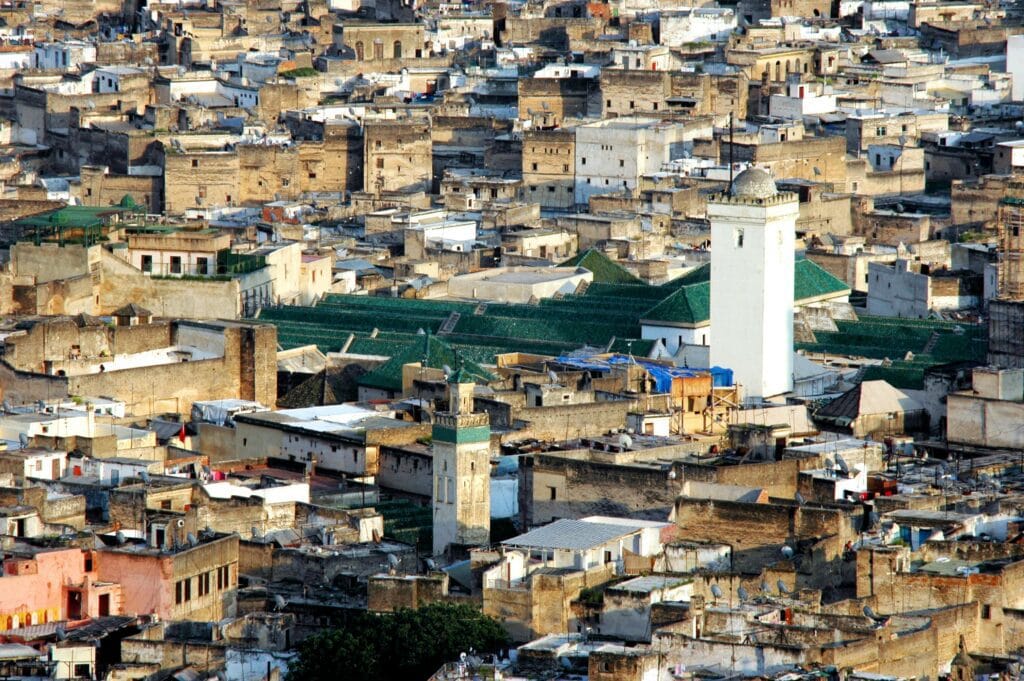
Afterward, walk 20 minutes north to the Old Medina of Casablanca. Unlike the more famous mazes of Fez or Marrakech, Casablanca’s modest medina offers an authentic, less-touristed market experience. Navigate the narrow lanes of Rue Allal Ben Abdellah, where you’ll find traditional Moroccan crafts without the aggressive sales tactics found elsewhere.
Afternoon: Mohammed V Square & Art Deco District Take a petit taxi (ensure they use the meter) to Mohammed V Square, the administrative heart of colonial-era Casablanca. The fountain-centered plaza is surrounded by remarkable French-Moroccan architecture, including the Post Office, Courthouse, and Bank Al-Maghrib.
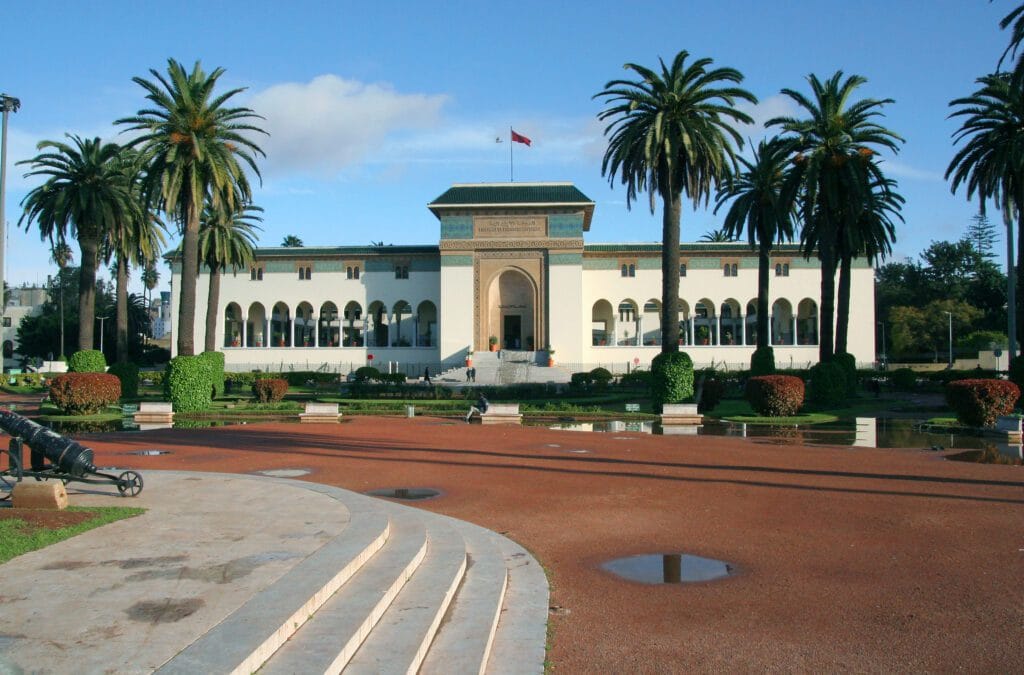
Continue your architectural exploration in the surrounding streets, where Casablanca’s UNESCO-recognized Art Deco and Moorish-influenced buildings create one of Africa’s most distinctive urban landscapes. Walk down Boulevard Mohammed V to admire facades featuring geometric patterns, rounded corners, and ornate detailing that earned Casablanca the nickname “Little Miami.”
Evening: Corniche Sunset & Seafood As the day cools, head to Ain Diab’s Corniche, Casablanca’s beachfront promenade. Watch the sunset paint the Atlantic horizon while local families and friends gather for evening strolls. For dinner, enjoy fresh seafood at one of the oceanfront restaurants Le Cabestan offers spectacular views and excellent fish tagine, though at premium prices (expect 300-400 MAD/$30-40 per person).
Day 2: Cultural Immersion & Culinary Delights
Morning: Villa des Arts & Quartier Habous Begin at the Villa des Arts, Casablanca’s premier art museum housed in a restored 1934 Art Deco building. The rotating exhibitions showcase contemporary Moroccan artists alongside international works. Entry is free, making it one of Casablanca’s best cultural values.

Next, take a taxi to Quartier Habous (New Medina), built by the French in the 1930s as a more orderly interpretation of a traditional Moroccan marketplace. The neighborhood’s arcaded walkways and organized shops make it ideal for souvenir hunting. Don’t miss Pâtisserie Bennis on Rue Fkih El Gabbas, crafting Morocco’s finest gazelle horns (crescent-shaped almond pastries) since 1938.
Afternoon: Central Market & Cooking Class Immerse yourself in local life at Marché Central, Casablanca’s main produce market on Rue Allal Ben Abdellah. The colorful displays of spices, olives, fruits, and vegetables provide both excellent photography opportunities and ingredients insights.
Use this newfound market knowledge at a cooking class with The Moroccan Food Tour (approximately 600 MAD/$60 per person). Learn to prepare authentic chicken tagine with preserved lemons and traditional Moroccan salads in a hands-on, small-group setting.
Evening: Racine Quarter Dining Discover Casablanca’s contemporary dining scene in the upscale Racine Quarter. Le Rouget de l’Isle serves innovative French-Moroccan fusion cuisine in an elegant setting. Alternatively, for a more casual experience, visit Blend, a trendy burger spot popular with Casablanca’s young professionals that serves camel meat burgers alongside beef options.
Day 3: Modern Casablanca & Hidden Gems
Morning: Morocco Mall & Anfa Place Experience modern Morocco at the Africa’s largest shopping center, Morocco Mall. Beyond international brands, visit the indoor aquarium and traditional souk section, which recreates a traditional market within this contemporary space.
Continue to nearby Anfa Place, an ultramodern mixed-use development designed by Foster + Partners that exemplifies Casablanca’s rapid modernization. The complex offers upscale shopping, dining, and striking ocean views.
Afternoon: Sacré-Cœur Cathedral & Jewish Museum Return to central Casablanca to visit the Sacré-Cœur Cathedral, a striking Neo-Gothic structure built in the 1930s that now serves as a cultural center. The abandoned cathedral’s unique architecture blends European and Moroccan design elements.
A 15-minute walk brings you to the Moroccan Jewish Museum the only Jewish museum in the Arab world. Through photographs, artifacts, and traditional costumes, it documents the rich history of Morocco’s Jewish community, which once numbered over 250,000 people.
Evening: Rooftop Farewell Conclude your Casablanca adventure with panoramic city views from Sky 28, the rooftop bar at the Kenzi Tower Hotel. Located on the 28th floor, it offers craft cocktails and tapas alongside spectacular vistas of the Hassan II Mosque illuminated against the night sky the perfect farewell to this complex, captivating city.
Book Your Trip Now
Budget Breakdown: Casablanca for Every Wallet
Understanding Casablanca’s costs helps you plan efficiently for Morocco’s most cosmopolitan city:
Accommodation (per night):
- Budget: 150-300 MAD ($15-30) for hostels or basic hotels near the Old Medina
- Mid-range: 500-900 MAD ($50-90) for comfortable 3-star hotels in central neighborhoods
- Luxury: 1,000-3,000+ MAD ($100-300+) for international chains and boutique hotels in Anfa or Ain Diab
Transportation:
- Airport to city center (30km): 300 MAD ($30) by official taxi, 20 MAD ($2) by Airport Train
- Petit Taxi (within city): 20-40 MAD ($2-4) for most inner-city journeys
- Tram: 6 MAD ($0.60) per journey, convenient for covering longer distances
- Day of private car hire with driver: 800-1,000 MAD ($80-100)
Food & Drink:
- Street food meal (sandwich, juice): 20-40 MAD ($2-4)
- Local restaurant lunch: 60-100 MAD ($6-10)
- Mid-range restaurant dinner: 150-250 MAD ($15-25)
- High-end dining experience: 400+ MAD ($40+)
- Mint tea in café: 10-15 MAD ($1-1.50)
- Domestic beer (where available): 40-50 MAD ($4-5)
Activities:
- Hassan II Mosque guided tour: 120 MAD ($12)
- Museums average entrance fee: 20-50 MAD ($2-5)
- Hammam (traditional bath) experience: 150-300 MAD ($15-30)
- Cooking class: 500-700 MAD ($50-70)
Money-Saving Tips:
- Use the efficient tram system (6 MAD per ride) to traverse Casablanca’s sprawling layout
- Visit the free Villa des Arts and public Corniche beaches
- Choose accommodations in central neighborhoods like Maarif or Gauthier for walkable access to attractions
- Enjoy a substantial lunch at business-oriented fixed-price menus (formule du jour), then opt for lighter dinner options
- Download the Careem app for reliable, meter-based taxi service without negotiation
Insider Tip: Unlike other Moroccan cities, Casablanca operates on more fixed prices with less expectation of haggling in established shops. However, in markets like the Old Medina, expect to negotiate to approximately 60-70% of the initial asking price.
Beyond the Tourist Trail: Casablanca’s Hidden Experiences
Casablanca offers fascinating alternatives to standard tourist itineraries, particularly for those seeking authentic cultural experiences:
Alternative Neighborhoods: Escape the main tourist areas by exploring Maârif, Casablanca’s bustling creative district where contemporary galleries like Le Cube and Loft Art Gallery showcase emerging Moroccan artists. Nearby, the industrial-chic spaces of Fondation Abderrahman Slaoui house impressive collections of vintage Moroccan advertisements and traditional jewelry.
Eco-Conscious Experiences:
- Join local volunteers for beach clean-up days organized by Association Bahri for environmental protection (check their Facebook page for scheduled events)
- Visit Urban Farm Casablanca, a pioneering agricultural project transforming unused urban spaces into productive gardens
- Shop at Casablanca’s growing number of eco-boutiques like Organic Kitchen, which sources seasonal produce from small-scale farmers around Morocco
Digital Nomad Friendly Spots: Casablanca increasingly caters to remote workers with co-working spaces like Workspot and New Work Lab offering day passes (approximately 100 MAD/$10). For great coffee and reliable Wi-Fi, The Lighthouse Café in Gauthier neighborhood provides comfortable workspace alongside excellent pastries.
Family-Friendly Alternatives: Families can escape Casablanca’s urban intensity at Parc Sindibad, a recently renovated amusement park combined with a zoo featuring Barbary macaques and other North African wildlife. For educational value, the interactive exhibits at Musée de la Fondation Mohammed VI are designed specifically for engaging younger visitors in Moroccan history and culture.
Food & Dining Suggestions: Casablanca’s Culinary Landscape
Casablanca’s food scene blends traditional Moroccan flavors with international influences:
Must-Try Local Specialties:
- Seafood Pastilla: Unlike the traditional pigeon version, Casablanca’s coastal location inspires this seafood-filled pastry dusted with cinnamon and sugar at restaurants like La Sqala
- Harira: This hearty tomato and lentil soup becomes especially popular during Ramadan; try an authentic version at Souk el Akhfaf food stalls
- Grilled Sardines: Sample Morocco’s most important fish simply prepared with charmoula marinade at the Central Market food stalls
- Casablanca-Style Couscous: Typically prepared with seven vegetables and served on Fridays at family-owned restaurants like Zayna
Neighborhood Food Experiences:
- Old Medina: Navigate to Restaurant Brougen for authentic, affordable Moroccan staples served in a no-frills setting
- Downtown: La Sqala occupies an 18th-century fortress, serving traditional dishes in garden surroundings
- Ain Diab: Ocean views complement fresh seafood at upscale Le Cabestan
- Racine Quarter: Try Blend for creative Moroccan-influenced burgers or Beats for international cuisine with local touches
Coffee Culture: Casablanca’s café scene ranges from traditional men’s coffee houses to modern third-wave establishments. Experience both extremes by visiting a traditional café near Mohammed V Square (where locals debate politics over sweet mint tea) and contemporary spots like Bondi Coffee Kitchen, where skilled baristas prepare specialty coffee from Ethiopian and Colombian beans.
Dining Tip: Try the tagine with caramelized pumpkin and almond at Al Mounia while watching the sunset transform the facade of the Hassan II Mosque. Order mint tea alongside dessert for the traditional Moroccan pairing it cuts through the sweetness of pastries perfectly.
Common Mistakes to Avoid in Casablanca
Sidestep these typical tourists pitfalls for a smoother Casablanca experience:
Planning Missteps:
- Expecting Medieval Medina Magic: Unlike Fez or Marrakech, Casablanca’s medina is modest and partially reconstructed. Appreciate it for its authenticity rather than spectacle.
- Underestimating Distances: Casablanca is Morocco’s largest city with attractions spread widely. Plan transportation between sites rather than assuming walkability.
- Weekend Timing: Many businesses close on Friday afternoons for prayers. The Hassan II Mosque also closes to tourists during prayer times, so check schedules in advance.
- Movie Misconceptions: The film “Casablanca” was never shot here, and “Rick’s Café” is a modern recreation inspired by the movie enjoyable, but not historic.
Cultural Considerations:
- Photography Etiquette: Always ask permission before photographing locals, particularly in markets and traditional areas.
- Dress Code Confusion: While more cosmopolitan than other Moroccan cities, conservative dress is still appreciated, especially in religious sites and traditional neighborhoods.
- Ramadan Adjustments: During the holy month, many restaurants close during daylight hours. Plan accordingly and respect those fasting by not eating publicly.
Navigation Nuances:
- Taxi Troubles: Insist on meter usage (now legally required) or agree on a fare before entering petit taxis. Grand taxis (for longer journeys) operate on fixed routes with set fares.
- Medina Maze: The old medina has fewer landmarks than other Moroccan medinas. Note distinctive shops or archways to orient yourself.
- Overpriced Shopping: Many souvenirs in tourist areas are actually made in China. For authentic Moroccan crafts, visit government-certified artisan centers.
Booking Blunders:
- Airport Transit: The Mohammed V International Airport is located 30km from the city center. Pre-arrange transportation or use the dedicated airport train rather than negotiating with unofficial taxis.
- Hammam Hesitation: Traditional bathhouses are gender-segregated with specific protocols. Research the process before visiting or book a spa hammam for a guided experience.
Safety & Travel Tips: Navigating Casablanca Confidently
Casablanca is generally safe for tourists, but urban precautions remain sensible:
Safety Considerations:
- Petty theft occurs primarily in crowded areas secure valuables in anti-theft bags, particularly around train stations and markets
- Avoid the neighborhoods of Carrières Centrales and parts of Hay Mohammadi after dark
- Solo female travelers should expect occasional unwanted attention; wearing sunglasses reduces eye contact and unwanted interactions
- Official taxis are small, red vehicles (petit taxis) or larger, white vehicles (grand taxis) avoid unmarked “taxis”
Health Precautions:
- Drink bottled water and avoid ice in smaller establishments
- Carry over-the-counter medications for stomach issues, as Moroccan cuisine can be richly spiced
- Clinique Internationale Casablanca in the Racine district offers quality care with English-speaking doctors
- Comprehensive travel insurance is essential Casablanca’s private medical facilities require upfront payment
Practical Tips:
- Download the Casablanca offline map on Google Maps before arrival
- Purchase a Maroc Telecom SIM card (approximately 30 MAD/$3) at the airport for reliable data access
- Learn basic French phrases (more widely spoken than English) or install a translation app
- The official currency is the Moroccan dirham (MAD), which cannot legally be exported exchange only what you’ll need
- Tipping approximately 10% is customary in restaurants; 5-10 MAD for taxi drivers
Cultural Navigation:
- Friday is the Islamic holy day expect adjusted hours for businesses and increased activity at mosques
- Public displays of affection are discouraged, regardless of gender
- During Ramadan, respect those fasting by not eating, drinking, or smoking in public during daylight hours
- If invited into a Moroccan home, bring quality pastries or fruit as a gift, remove shoes before entering, and compliment the home
Beyond the Movie: Why Casablanca Deserves Your Attention
Casablanca defies easy categorization neither purely traditional nor completely modernized, it represents Morocco in transition. The city rewards curious travelers with a compelling blend of architectural treasures, cultural authenticity, and contemporary energy rarely found elsewhere in North Africa. From the magnificence of the Hassan II Mosque rising from the Atlantic to the Art Deco gems hiding in plain sight, Casablanca offers a fascinating alternative to Morocco’s more tourist-oriented destinations.
What makes Casablanca truly special is its genuine character this is a real Moroccan city where locals live, work, and play, rather than a curated experience designed for visitors. By embracing both its challenges and charms, you’ll discover the complex, captivating soul of modern Morocco.
Have you visited Casablanca? What hidden gems did you discover beyond the tourist trail? Share your experiences in the comments below or join our Morocco Travel Facebook group to connect with fellow travelers planning their Moroccan adventures. For personalized Casablanca itinerary recommendations, email us at connect@moroccodiscovery.com.
FAQ About Casablanca
Is Casablanca safe for tourists?
Casablanca is generally safe for tourists, though standard urban precautions apply. Avoid isolated areas after dark, particularly around the old medina and train station. Petty theft occurs in crowded places, so secure valuables accordingly. The main tourist areas and business districts maintain good security presence.
How many days do I need in Casablanca?
Two to three days is ideal for experiencing Casablanca’s highlights without rushing. This allows time for the Hassan II Mosque, exploring the Art Deco district, sampling local cuisine, and visiting key museums. Travelers with limited time in Morocco might consider a single full day focused on the Hassan II Mosque and central historic district.
Do I need to cover up in Casablanca?
Casablanca is Morocco’s most cosmopolitan city, with somewhat relaxed dress codes compared to other regions. However, respectful attire is still appreciated shoulders and knees should be covered, particularly when visiting religious sites. Women are not required to cover their hair except when entering the Hassan II Mosque.
Is Casablanca worth visiting compared to Marrakech or Fez?
Casablanca offers a different Moroccan experience focused on contemporary urban life rather than medieval medinas. Visit Casablanca for impressive 20th-century architecture, excellent museums, and authentic local culture without overwhelming tourism. It’s ideal for travelers seeking modern Morocco beyond the tourist trail or those interested in architectural history.
What language is spoken in Casablanca?
Darija (Moroccan Arabic) is the primary language in Casablanca, with French widely spoken in business, government, and tourism sectors. English proficiency is increasing, particularly among younger Moroccans and in tourism-oriented establishments. Basic French phrases are more useful than English in everyday interactions.
Can you drink alcohol in Casablanca?
Unlike some Moroccan cities, Casablanca has relatively accessible alcohol. International hotels, upscale restaurants, and dedicated bars serve alcoholic beverages, though public drinking remains taboo. Supermarkets like Carrefour have dedicated alcohol sections with restricted hours. During Ramadan, alcohol service may be limited to tourists in hotels only.
What’s the best way to get around Casablanca?
Casablanca’s efficient tram system connects major neighborhoods for just 6 MAD per journey. Petit taxis (small red cars) provide convenient transportation for shorter trips insist on meter usage. For destinations outside the center, grand taxis (larger white vehicles) operate on fixed routes. Walking works well within distinct neighborhoods, but the city’s sprawl makes public transportation essential for longer distances.
Is Casablanca a good shopping destination?
Casablanca offers Morocco’s most diverse shopping experience, from traditional markets to luxury boutiques. The Morocco Mall provides international brands, while Quartier Habous offers quality crafts in a less overwhelming setting than other Moroccan souks. For unique souvenirs, visit concept stores like Fenêtre sur Cour, which showcase contemporary Moroccan design.
